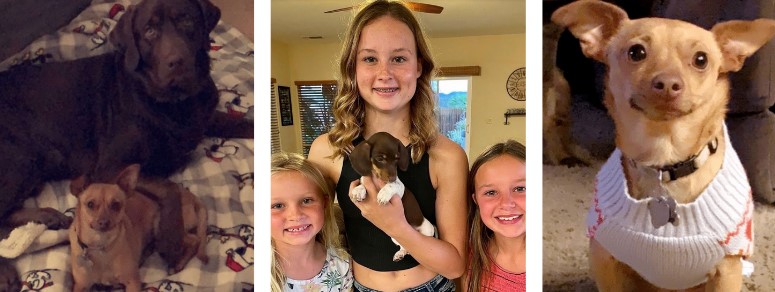As COVID trends forced us into quarantine, a new trend rose: pandemic pets. People forced to stay in their homes suddenly found themselves with a lot of time on their hands and not sure how to spend it or how long it would last.
The ASPCA estimates around 23 million American households chose to use this as a time to adopt a pet. They could stay with it and get it adjusted to their home and trained by the time they had to go back to work. Freshman Alexis Hickey adopted two dogs into her family during the pandemic.
“Having a pet has improved my life by helping my family bond with each other and work together to take care of our dogs.”

Whether they got their pet from a breeder or adopted it from a shelter, around 1 in 5 American households chose to become pet parents according to the New York Times. Bringing a pet into their home helped a lot of people feel less isolated during a time when they were separated from society. They found comfort in cuddling with their furry friend. Sophomore Brielle Burt said that coming home from a bad day at school to her dogs helped her because,
“I think they can sense when I’m sad or having a bad day and they will always come into my room and do something to make me laugh.”
Studies have shown that there are several health benefits to adopting man’s best friend. Besides the increase of physical activity which can help your heart health; those doggy smiles can reduce stress, lower your blood pressure, ease loneliness and depression. Johns Hopkins Medicine says, “simply petting a dog lowers the stress hormone cortisol, while the social interaction between people and their dogs actually increases levels of the feel-good hormone oxytocin.”

Hickey definitely appreciates the benefits of her furry friend,
“when coming home from a bad day whether it was with friends or because of a bad grade, Stella is always her goofy self and she puts a smile on my face no matter how bad my day was.”
With millions of pets being adopted during quarantine, it was a concern that the animals would be surrendered once people returned to their daily lives and felt being responsible for a pet was too much to handle with them being gone a lot more.
The ASPCA President and CEO, Matt Bershadker, released a statement showing those worried were barking up the wrong tree because, “the vast majority of these households still have that pet in the home -90 percent for dogs and 85 percent for cats- and are not considering rehoming their pet in the near future.”
Burt says, “getting those two over quarantine was probably the best and worst idea. They make the biggest messes but bring the biggest smiles to our faces and I don’t know what my life would even look like without them.”









